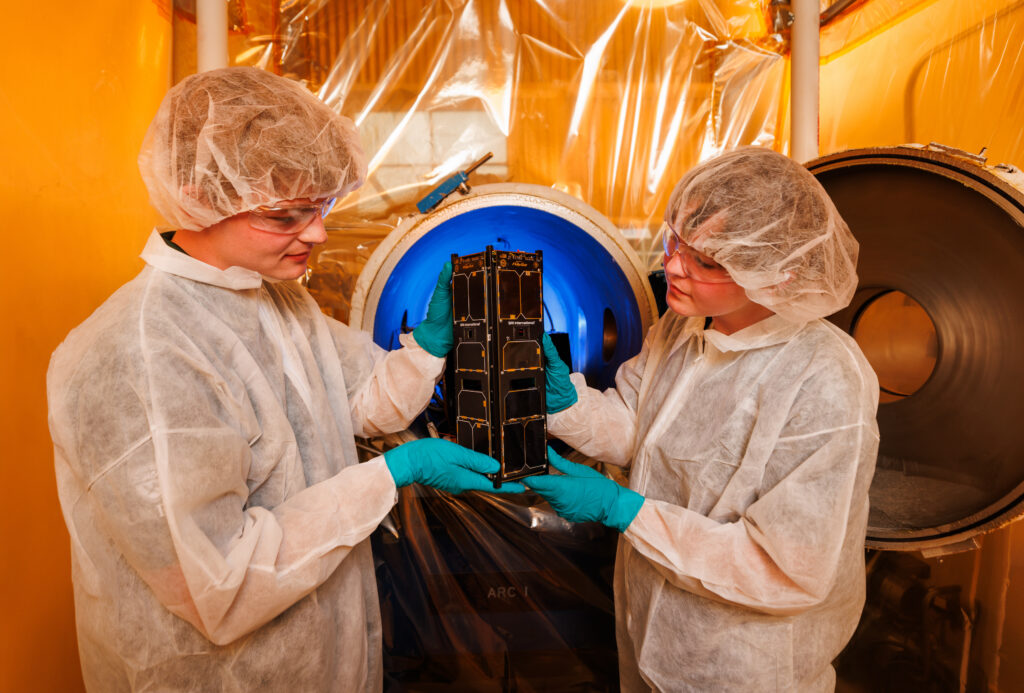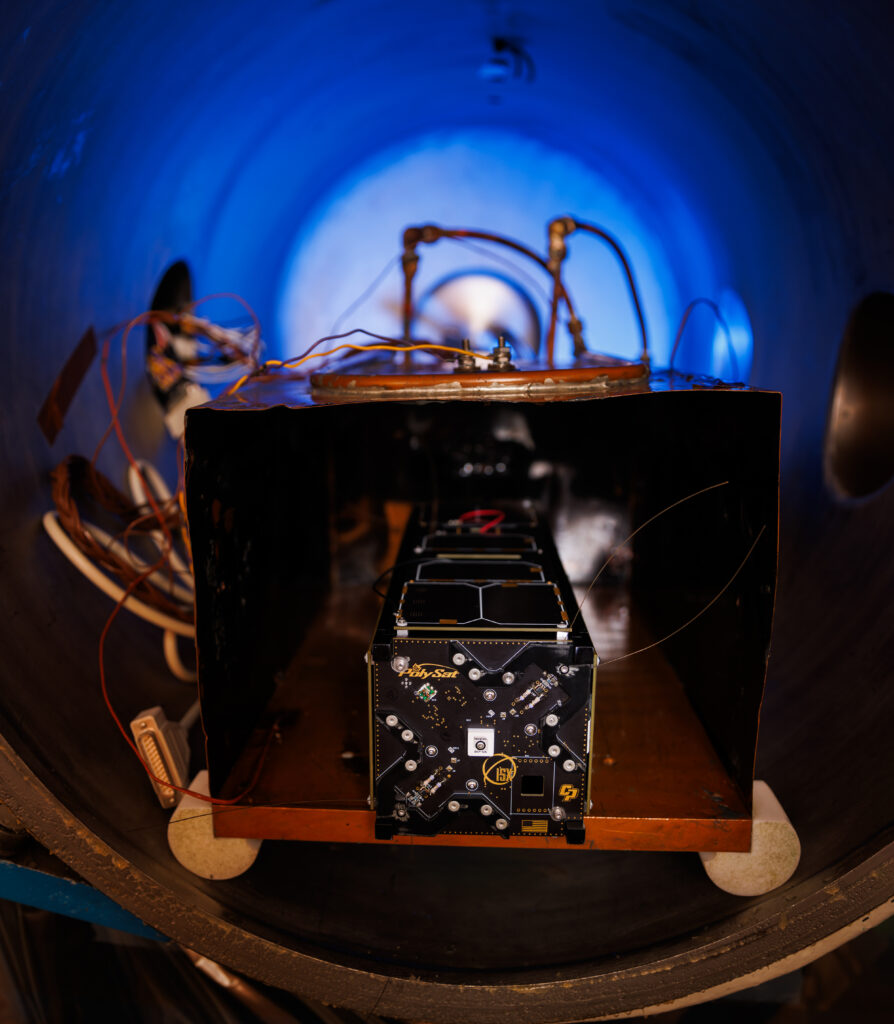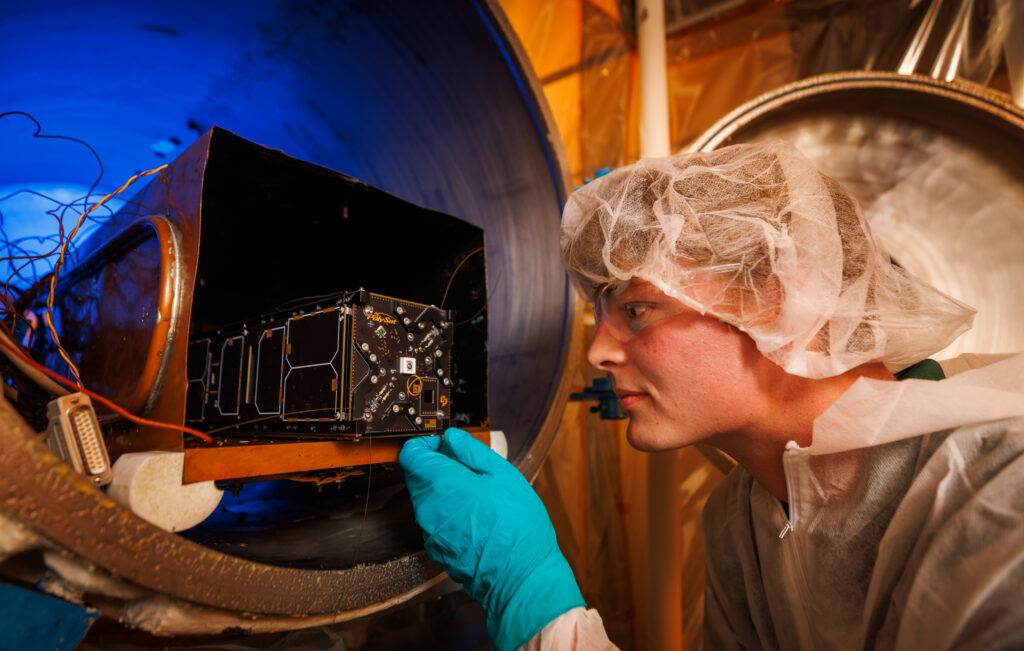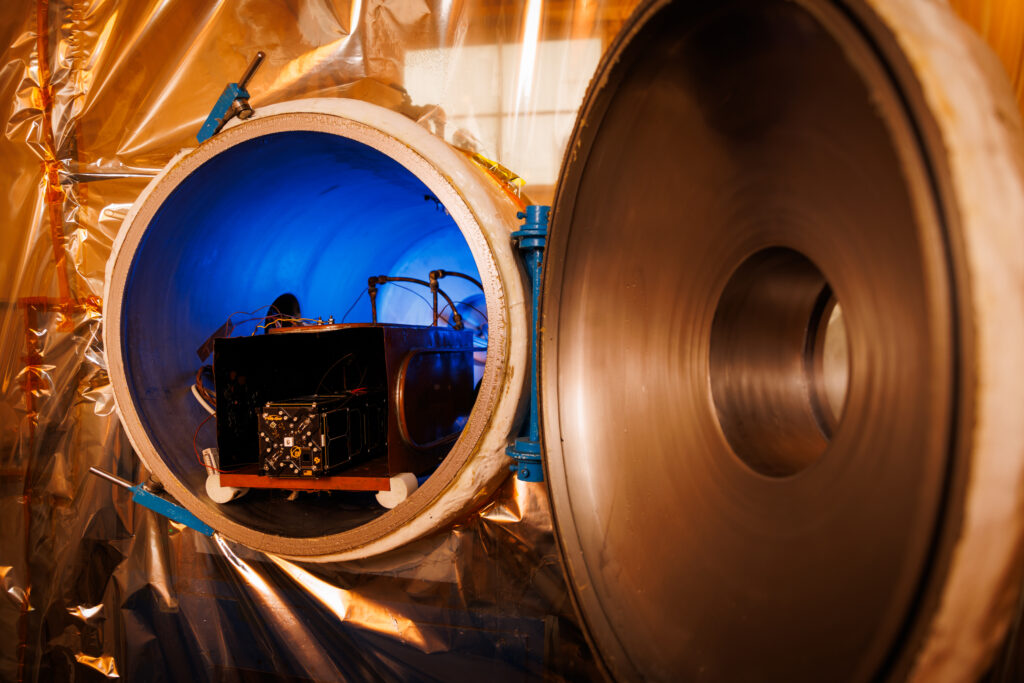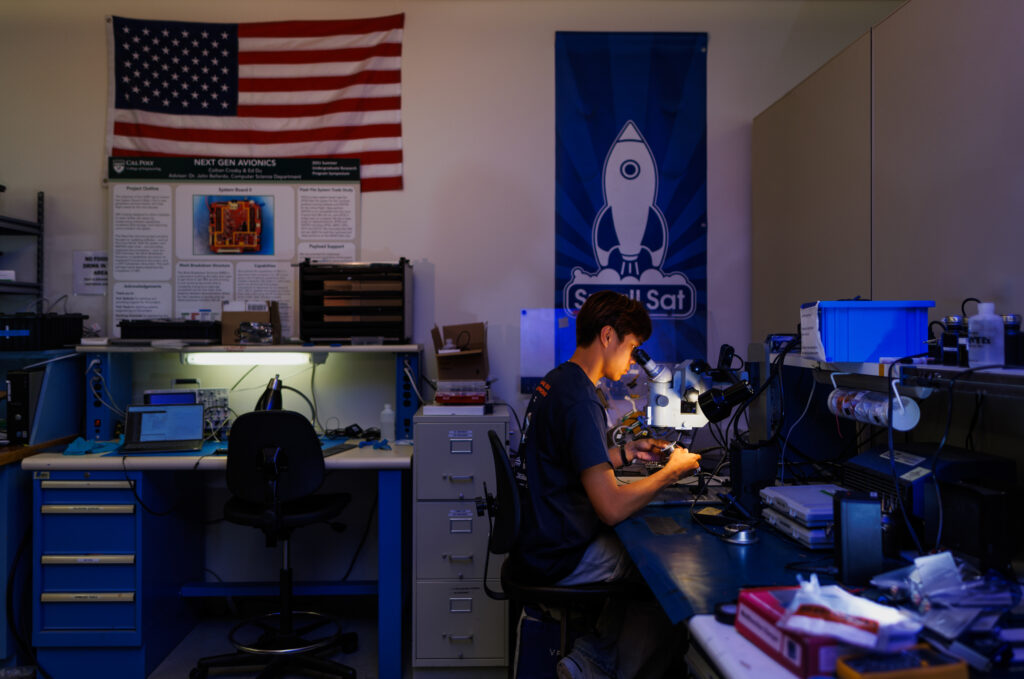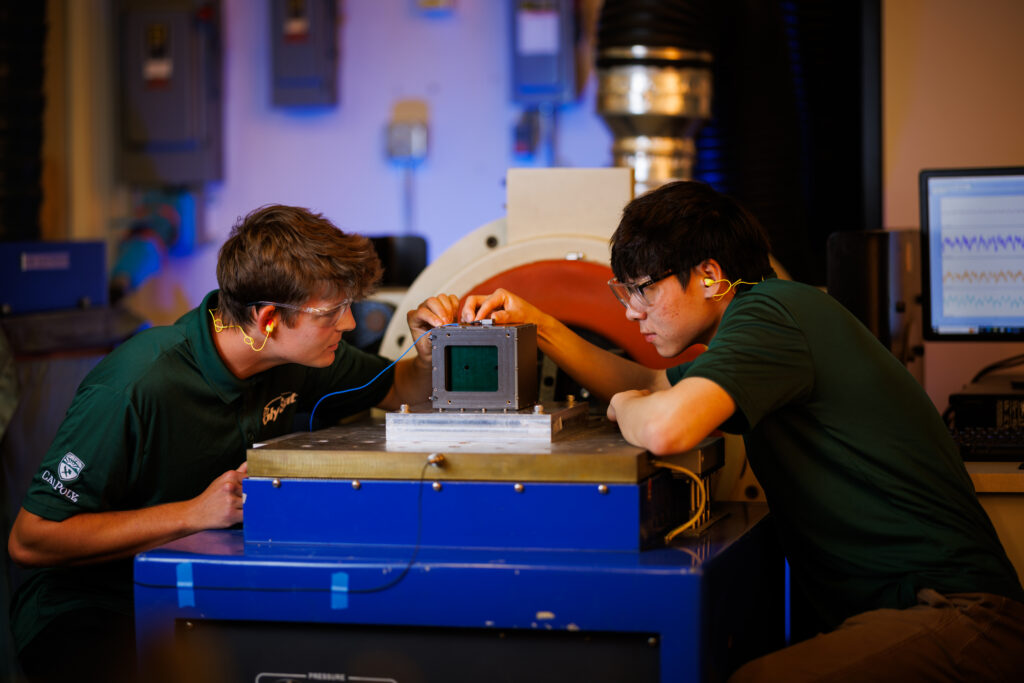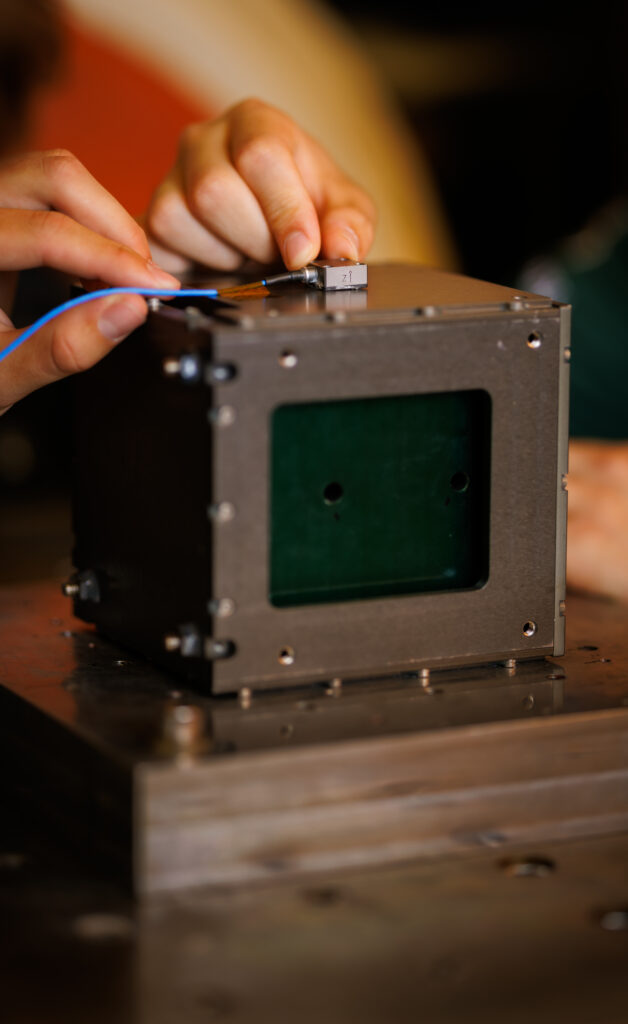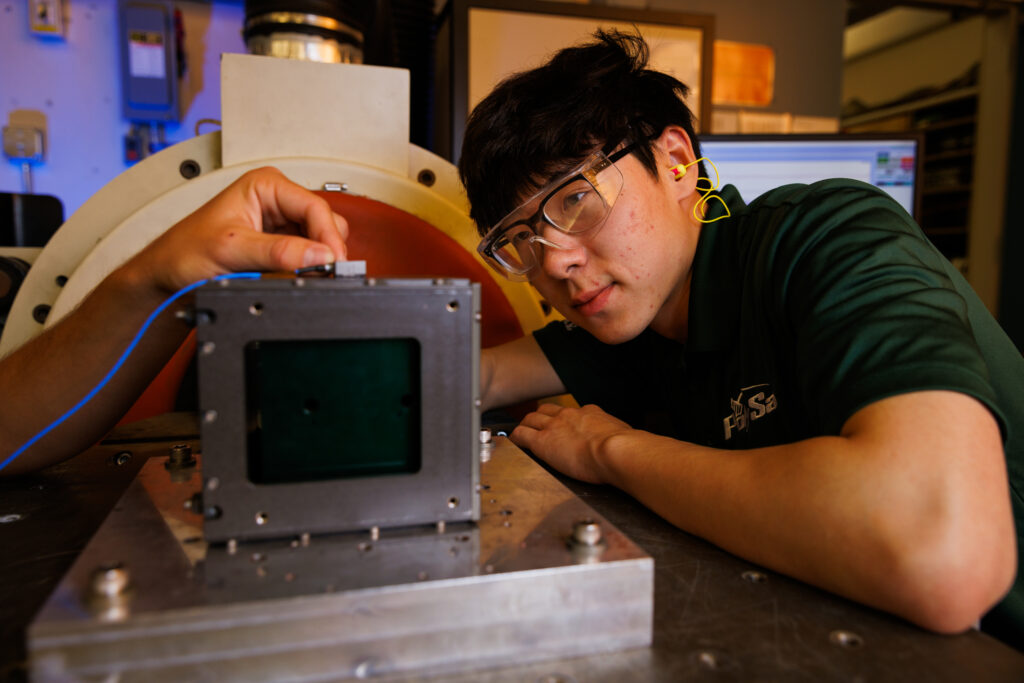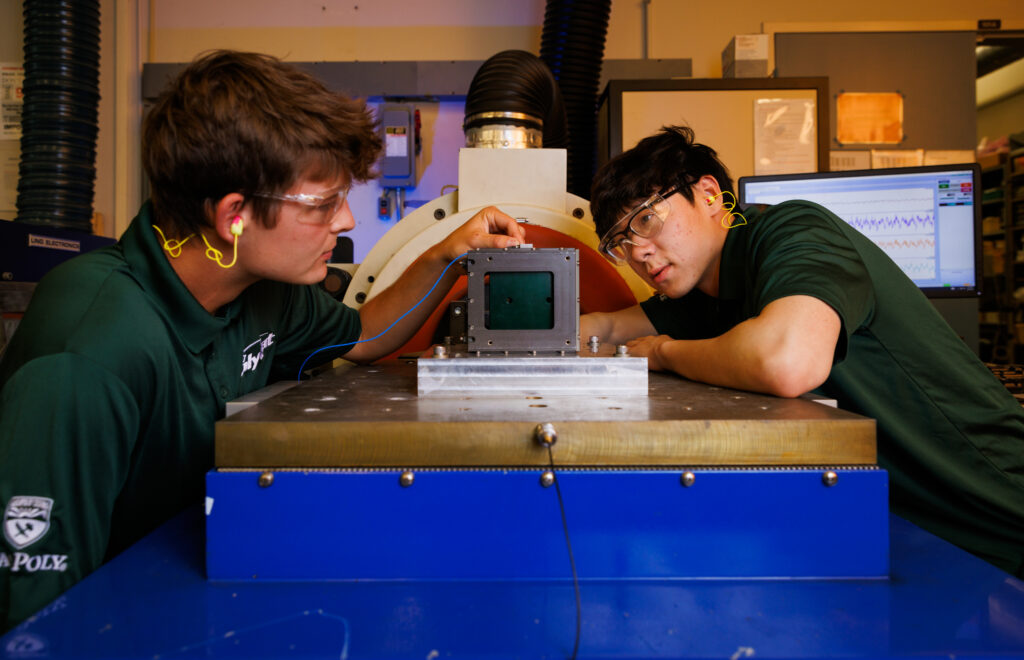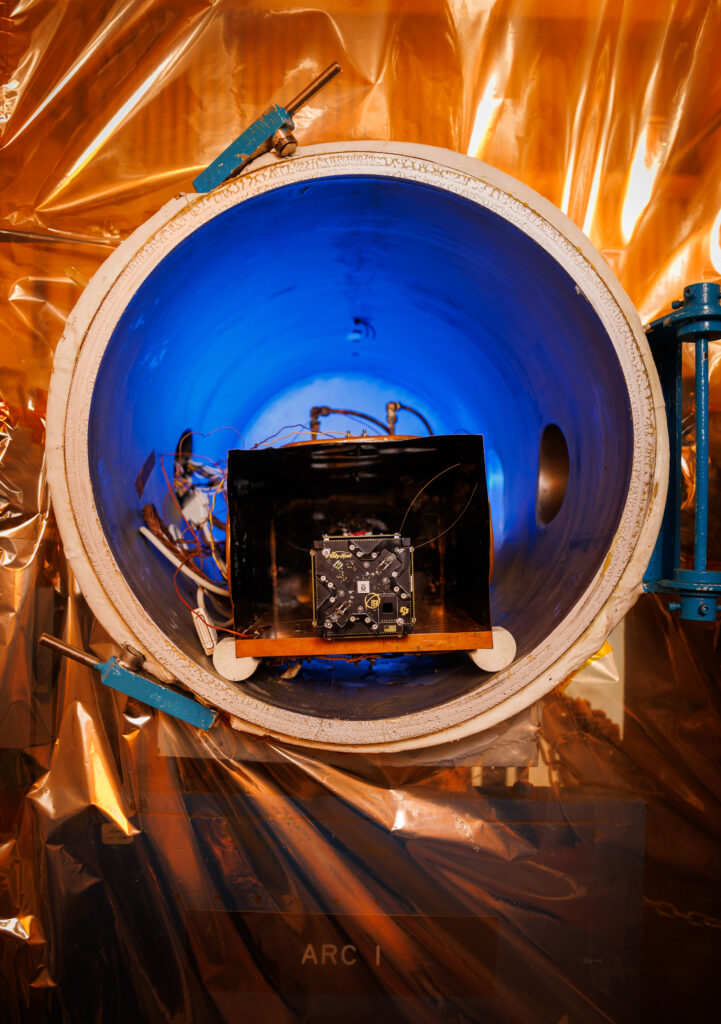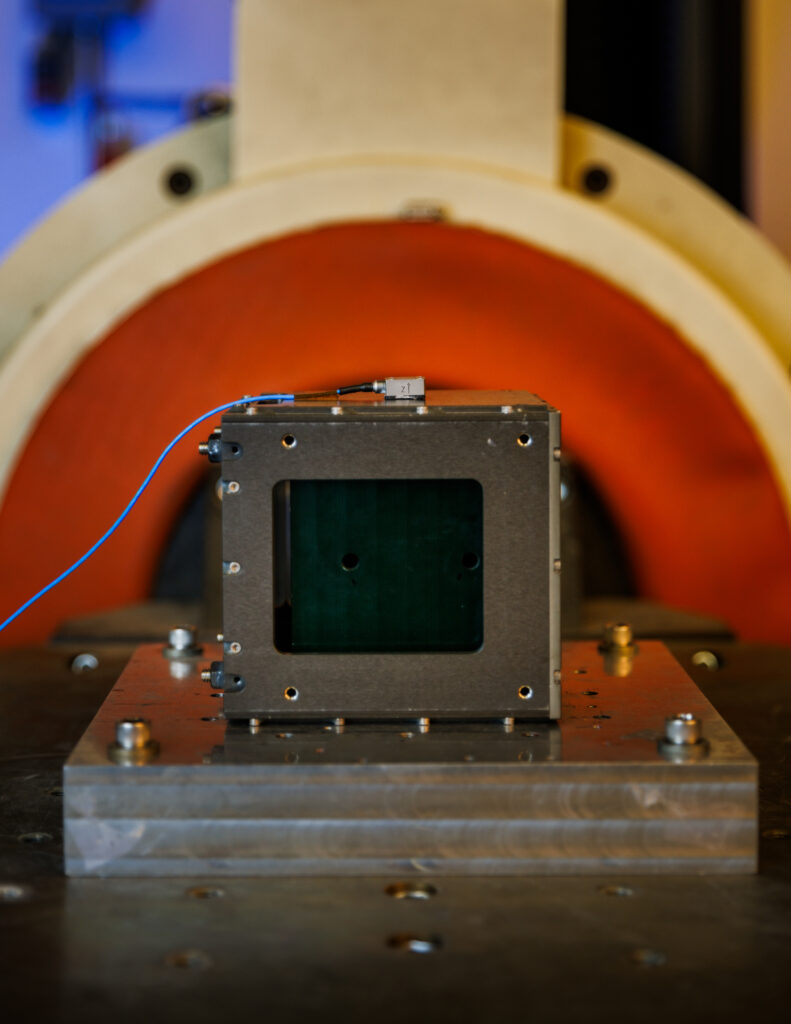Fast-Track to the Stars: PolySat Aims for Record-Speed CubeSat Development with SAL-E
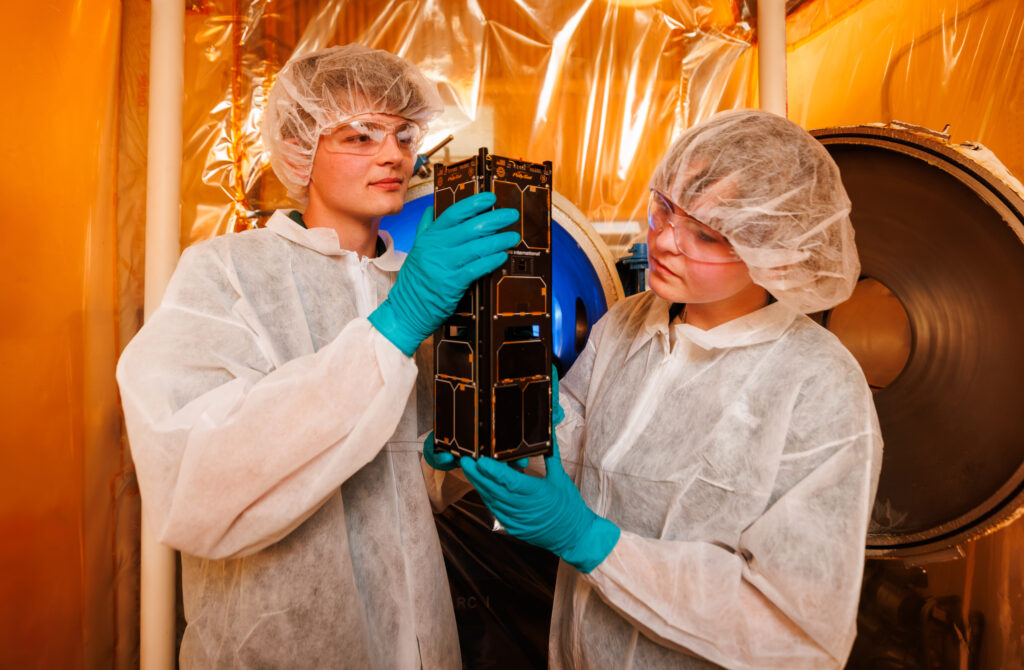
The PolySat team is on a mission to find out just how fast they can ready a satellite for launch.
Building the compact, box-shaped satellites known as CubeSats typically spans four years from inception to launch, according to computer science Professor John Bellardo. The longest project he recalls lasted a decade.
PolySat, Cal Poly’s CubeSat development team, is on track to launch its latest satellite, SAL-E, in under two years, setting a record for the student-run research lab.
“Such a timeline ensures every student in the project will get to see it from start to finish,” said Bellardo, faculty lead for Cal Poly’s CubeSat Lab. “The work they do now will be flying in 18 months.”
The project’s main goal is to rebuild the institutional knowledge that was lost during the COVID-19 pandemic, a period when many students left the team. For a satellite program as successful and influential as Cal Poly’s, the value of regaining experience and momentum is immeasurable.

The pathfinder mission’s feasibility hinged on significant financial support, which The Noyce School of Applied Computing provided at a critical juncture. In its first-ever call for proposals, the new school allocated $200,000 to fund 10 faculty projects, designating $40,000 specifically for the satellite project.
“The funding will cover the costs of the spacecraft’s components from aluminum and wires to circuit boards and consumables, providing an educational advantage to the current generation through the hands-on experience that Cal Poly is renowned for,” Bellardo said.
The project embodies the Noyce School’s mission to create opportunities that leverage computer science principles, concepts and technologies to solve real world problems, and signals the onset of more groundbreaking initiatives to follow.
Request for proposals
Upon issuing the call for proposals in the fall, soon after the Noyce School was inaugurated, Director Chris Lupo was pleasantly surprised by the enthusiastic response from across campus.
“We had success in getting the word out and saw a lot of interest in applied computing that extended well beyond the College of Engineering,” said Lupo, who noted 34 proposals came from colleges spanning business, math and science, agriculture and liberal arts.
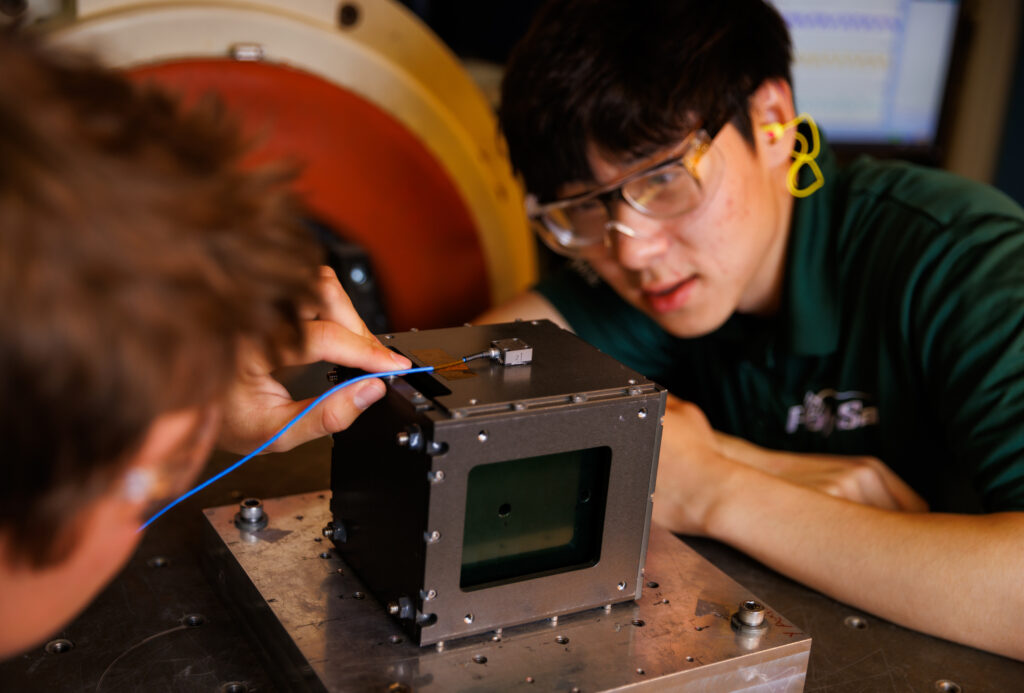
“I was really pleased to see such strong participation and was surprised by the breadth of the projects,” Lupo said. “With this funding cycle, our goal was to define computing as broadly as possible.”
Each proposal had to feature at least one faculty member from a Noyce School department, including computer engineering, computer science and software engineering, electrical engineering or statistics.
“We were especially keen on cross-disciplinary partnerships, because that’s where the magic happens – at the intersections of disciplines,” Lupo said.
Project leaders were informed about the funding in January, after a faculty council selected the projects based on a rubric that emphasized interdisciplinary focus and student involvement. In addition to the satellite project, the initiatives set to run until June 2025 encompass an array of focal points such as artificial intelligence, robotics, and the development of an accessible decision support system for navigating employment visas and permanent residency in the U.S.
Building a satellite
The mission to construct the Streamline Assembled Learning Experiment (SAL-E) stood out as a prime candidate for Noyce funding, thanks to its multidisciplinary approach that engages students from nearly every department within the college.
“The mission of the Noyce School lines up nicely with the interdisciplinary nature of the lab,” said Bellardo, noting that aerospace engineering lecturer Stephen Kwok-Choon and electrical engineering lecturer Steve Dunton have teamed up with him on the Noyce-funded project.
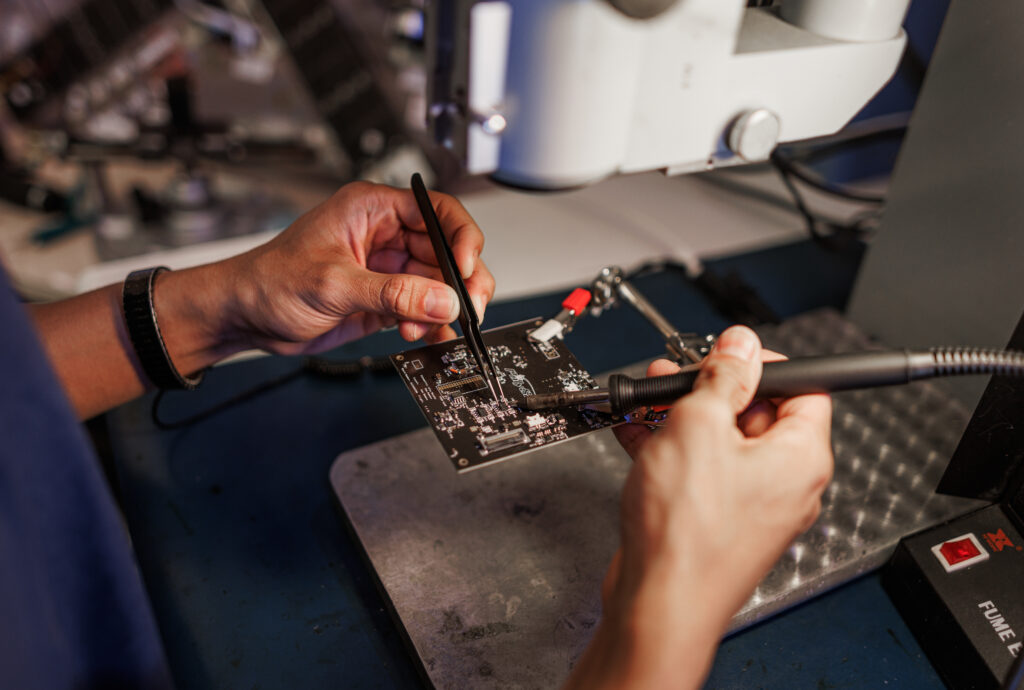
Approximately 70 students are actively engaged in the CubeSat Laboratory, dedicating their efforts to innovative projects that include SAL-E, inspired by Sally Ride who became the first American woman to venture into space.
Their responsibilities encompass an array of activities, including developing software, formulating a budget for the mission and conducting tests, which necessitates the variety of academic majors represented in the lab.
“Programmatically, everyone should have the opportunity to help with operations when the satellite is in orbit,” Bellardo said.
Another group of Cal Poly students is working on designing the payload for SAL-E, which includes a semiconductor memory chip based on open-source design principles.
“The goal is to see if this open-source design holds up with the radiation in space,” said Francisco Wilken, a fourth-year computer engineering student involved with the Computer Architecture Research Project (CARP). “We want to determine the rate of data corruption, which has been locked behind the nondisclosure agreements associated with traditional chips.”
Should the design be validated, it could serve as a blueprint for future advancements and establish Cal Poly’s presence in the semiconductor manufacturing industry. (See sidebar for more on CARP)
“While the Noyce funding directly benefits PolySat, it also indirectly supports the work of another group by integrating their contributions into the satellite,” Bellardo said.
The PolySat team started work in late September, focusing on designing a satellite for a six-month mission, with assembly and fabrication scheduled to start this spring. The satellite will be the inaugural launch in the post-COVID era.
Maverick Space Systems, led by Cal Poly alumnus Roland Coelho, a key member of the CubeSat standard’s founding team in 2000, will partner as the launch integrator.
“When our students undertake internships at companies like Northrop Grumman or Boeing, they often don’t get the chance to engage directly with spacecraft,” Bellardo said. “Here, they don’t just observe CAD models; they actively participate in the construction of the spacecraft themselves. It’s the definition of Learn by Doing.”
Students continue digital design work of late professor
Computer engineering Professor Joseph Callenes-Sloan was an ardent supporter of student research initiatives before his death from cancer in December 2023.
He mentored multiple projects, notably the Computer Architecture Research Project (CARP), comprised of about six students, mostly at the master’s level, dedicated to pioneering advancements in semiconductor chip manufacturing.
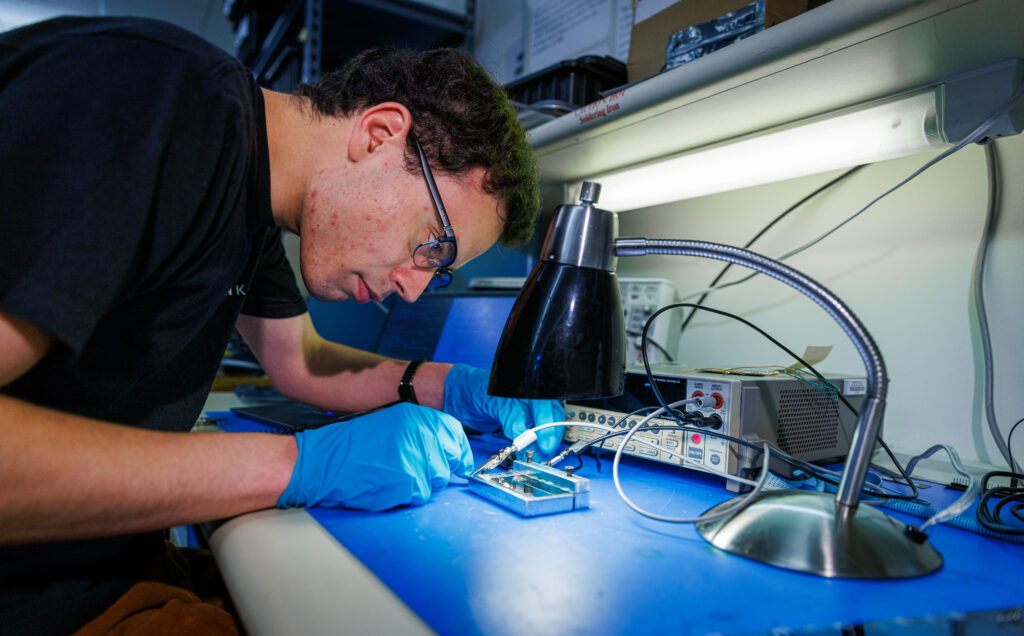
Their microchip based on open-source designs would be the first of its kind, putting Cal Poly on the map for chipmaking, according to Francisco Wilken, a fourth-year computer engineering student and CARP member recruited by Callenes-Sloan.
“With this project, we are dipping our toes into the water of designing for space, which is something the open-source community has been wanting to test,” he said.
The microchip will be incorporated into the PolySat team’s latest satellite, potentially offering crucial insights into radiation hardening and data corruption rates.
“If it works, this could be the start of something the school hasn’t done before in chipmaking,” said Wilken, who will continue as a CARP consultant for PolySat while pursuing a blended master’s in computer science. “I’ll be really interested in the results once the satellite is in orbit.”
Wilken hopes to recruit new members for CARP, given that most have graduated, while also exploring the potential to secure official club status.
